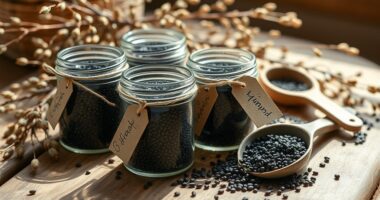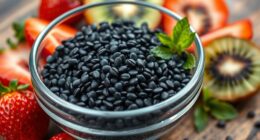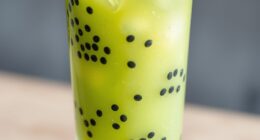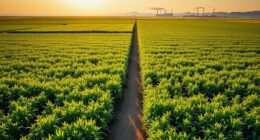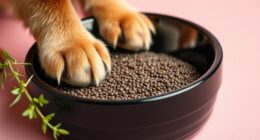Are you prepared to harness the remarkable capabilities of nature’s small but mighty force? We’re here to assist you with our best methods for maximizing the advantages of chia seeds.
From selecting the right seeds to harvesting and storing them, we’ll guide you every step of the way.
Get ready to discover the secrets to optimal growth and enjoy the bountiful rewards.
Let’s dive in and start serving ourselves with the wonders of chia seeds!
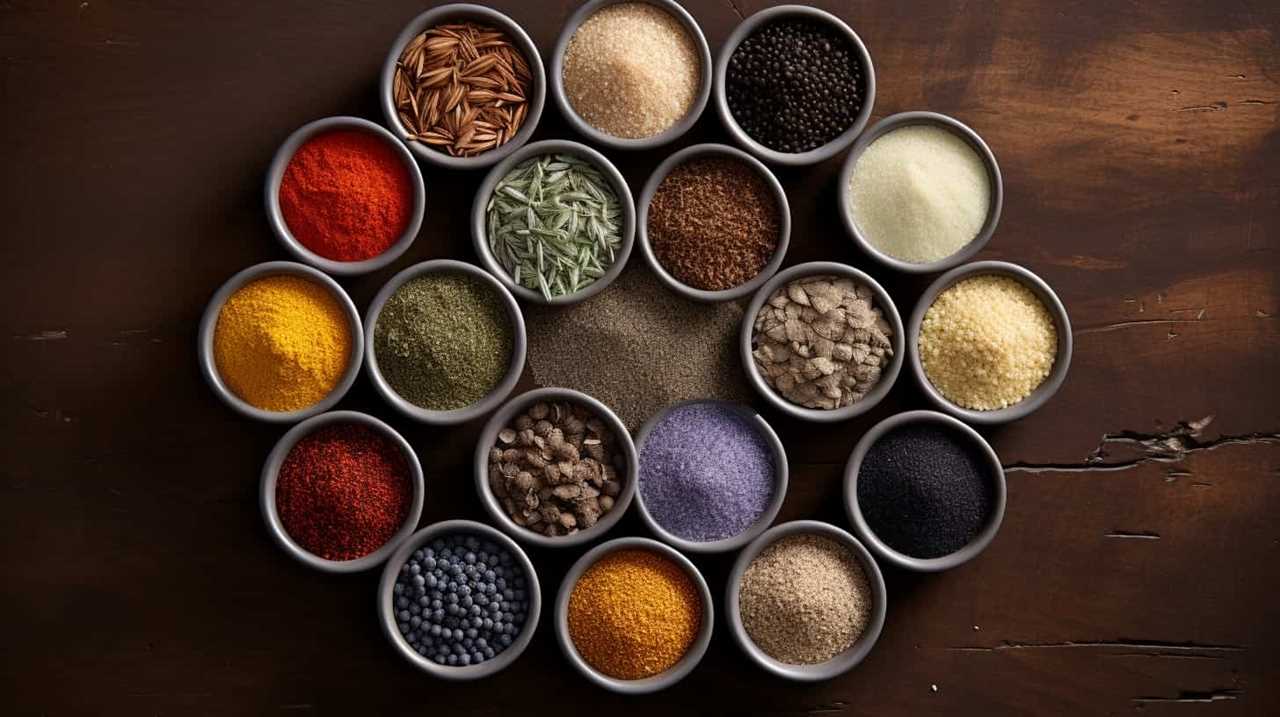
Key Takeaways
- Chia seeds are packed with essential nutrients like fiber, protein, omega-3 fatty acids, and antioxidants.
- Incorporating chia seeds into our daily diet can enhance overall health.
- Properly sowing chia seeds unlocks their full potential and enhances their benefits.
- Handle chia seeds with care to preserve their nutritional value and extend their shelf life.
Selecting the Right Chia Seeds
When selecting chia seeds, we prioritize freshness and quality over all other factors. Chia seeds are a nutritional powerhouse, packed with essential nutrients that can benefit our health in numerous ways. These tiny seeds are rich in fiber, protein, omega-3 fatty acids, and antioxidants, making them an excellent addition to our daily diet. Not only do they provide sustained energy, but they also aid in digestion, promote heart health, and support weight management. By choosing chia seeds that are fresh and of high quality, we ensure that we’re getting the maximum nutritional benefits from these amazing seeds.
Now that we understand the importance of selecting the right chia seeds, let’s move on to preparing the soil for optimal growth and cultivation.
Preparing the Soil for Chia Seeds
To ensure optimal growth and cultivation of chia seeds, we prepare the soil using proven techniques that promote nutrient absorption and provide a conducive environment for germination.
Proper soil preparation is crucial for the successful growth of chia seeds. The first step is to clear the area of any debris, such as rocks or weeds, that may hinder germination. Then, we loosen the soil using a garden fork or tiller, ensuring it’s well-drained and aerated.

Adding organic matter, such as compost or well-rotted manure, is essential for enriching the soil with essential nutrients. We also recommend conducting a soil test to determine the pH level and make necessary amendments.
Once the soil is prepared, it’s ready for chia seed sowing, ensuring that the seeds are evenly distributed and covered with a thin layer of soil.
With proper soil preparation, chia seeds can thrive and provide you with a bountiful harvest.
Sowing Chia Seeds for Optimal Growth
We begin by evenly distributing and covering chia seeds with a thin layer of soil to ensure optimal growth.
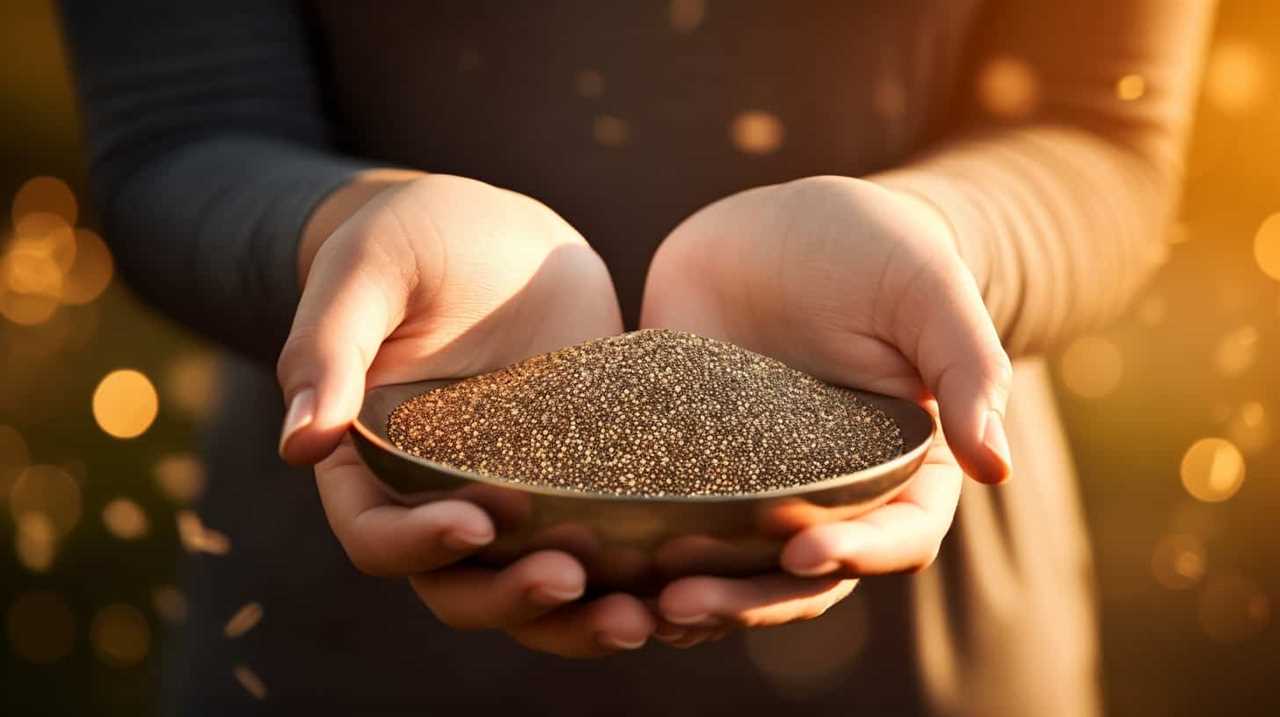
Chia seeds, known for their numerous health benefits and culinary uses, are a powerhouse of nutrients that can be easily incorporated into our daily diet. These tiny seeds are packed with fiber, protein, omega-3 fatty acids, and antioxidants, making them a valuable addition to any meal.
By sowing chia seeds properly, we can unlock their full potential and enjoy their many benefits. Whether we use them in smoothies, puddings, or as a topping for salads and yogurt, chia seeds add a delightful crunch and nutty flavor to our dishes.
Watering and Maintaining Chia Plants
Now let’s delve into the crucial task of properly watering and maintaining our chia plants to ensure their healthy growth and abundant production.
Watering frequency is a key factor in keeping chia plants thriving. These plants prefer moist soil, so it’s important to water them regularly, especially during hot and dry weather. Aim to water the plants at least once a week, making sure to thoroughly saturate the soil. However, be cautious not to overwater, as this can lead to root rot.
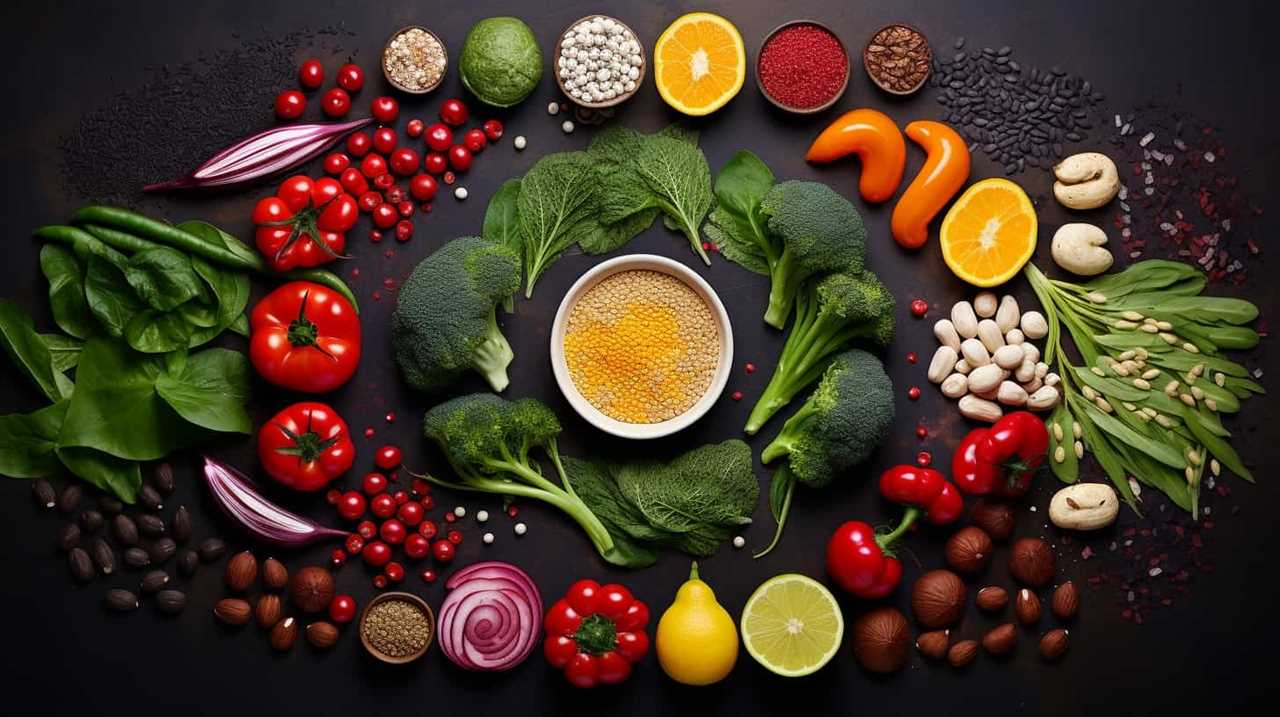
When it comes to pruning techniques, it’s recommended to regularly trim the chia plants to encourage bushier growth. This can be done by gently removing the top growth tips, which will help the plant develop more side shoots and ultimately result in a fuller and more productive plant.
Harvesting and Storing Chia Seeds
When harvesting and storing chia seeds, it’s important to handle them with care to preserve their nutritional value and extend their shelf life. Here are some best practices for storing chia seeds to ensure their freshness:
-
Choose the right container: Store chia seeds in an airtight container to keep moisture and air out. Glass jars or plastic containers with tight-fitting lids work well.
-
Keep them cool: Chia seeds should be stored in a cool, dark place away from direct sunlight and heat sources. This helps to prevent oxidation and maintain their quality.

-
Label and date: It’s essential to label the container with the date of storage to keep track of freshness. Chia seeds can last up to two years if stored properly.
-
Avoid moisture exposure: Moisture can cause chia seeds to spoil quickly. Ensure that the container is completely dry before adding the seeds, and avoid storing them in areas prone to high humidity.
Frequently Asked Questions
How Long Does It Take for Chia Seeds to Germinate and Sprout After Sowing?
Germination timeline of chia seeds varies, but under ideal conditions, they can sprout within 2-7 days after sowing. Providing proper moisture, temperature, and light will enhance germination success and help us reap nature’s tiny powerhouse.
Can Chia Plants Be Grown in Containers or Do They Require a Large Garden Space?
Container gardening for chia plants offers flexibility and convenience. With limited space, we can nurture these powerful seeds right at our doorstep. The advantages include easy maintenance, control over soil quality, and accessibility for daily harvests.
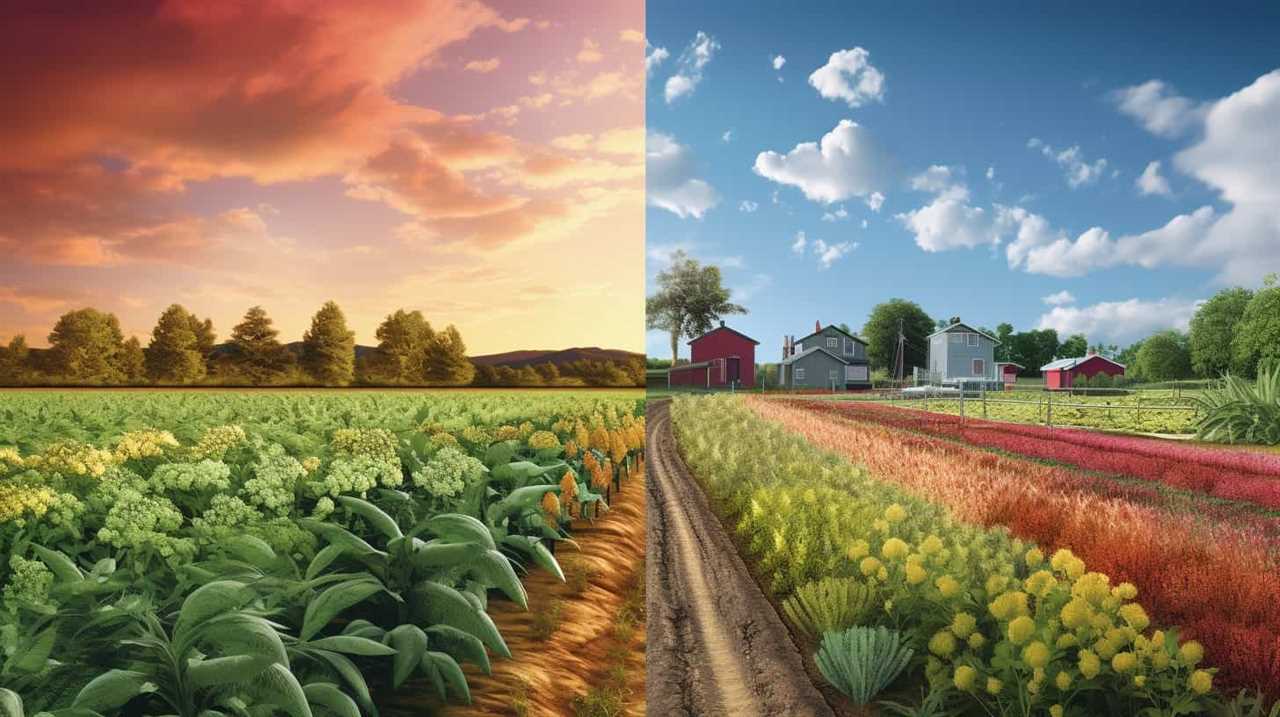
Are There Any Specific Pests or Diseases That Commonly Affect Chia Plants, and How Can They Be Prevented or Treated?
Prevention and treatment of common pests and diseases affecting chia plants is crucial for optimal growth. We are passionate about sharing the ideal conditions for chia plant growth to help serve others in their gardening endeavors.
What Is the Recommended Frequency and Amount of Water Required for Watering Chia Plants?
We’ve found that chia plants thrive when watered every two to three days, with about 1-2 inches of water per week. Factors like climate, soil type, and plant size can affect watering needs, so it’s important to monitor and adjust accordingly.
Can Chia Plants Tolerate Extreme Weather Conditions Such as Heatwaves or Frost?
Challenges of growing chia plants in extreme weather conditions include heatwaves and frost. To care for chia plants during these conditions, it’s important to provide shade and proper insulation. Watering and mulching are also crucial for their survival.
Conclusion
In conclusion, by following the top techniques for reaping nature’s tiny powerhouse, one can unlock the full potential of chia seeds.

With careful selection, preparation, and sowing, coupled with proper watering and maintenance, chia plants can thrive and yield an abundant harvest.
By harvesting and storing the seeds correctly, their nutritional benefits can be preserved for long-term use.
Embracing the power of chia seeds is truly a journey worth embarking on, leading to a healthier and more vibrant life.


